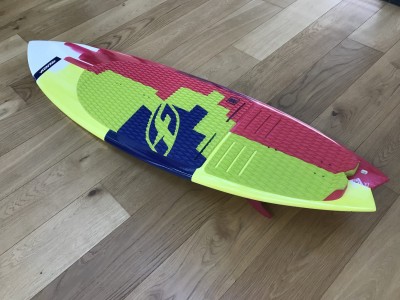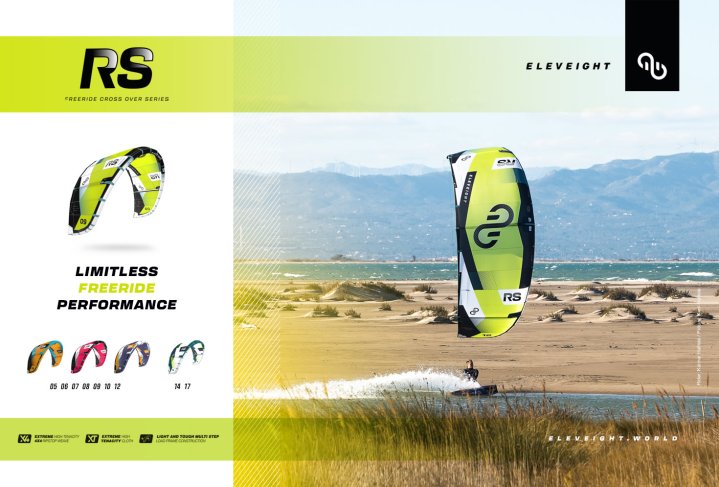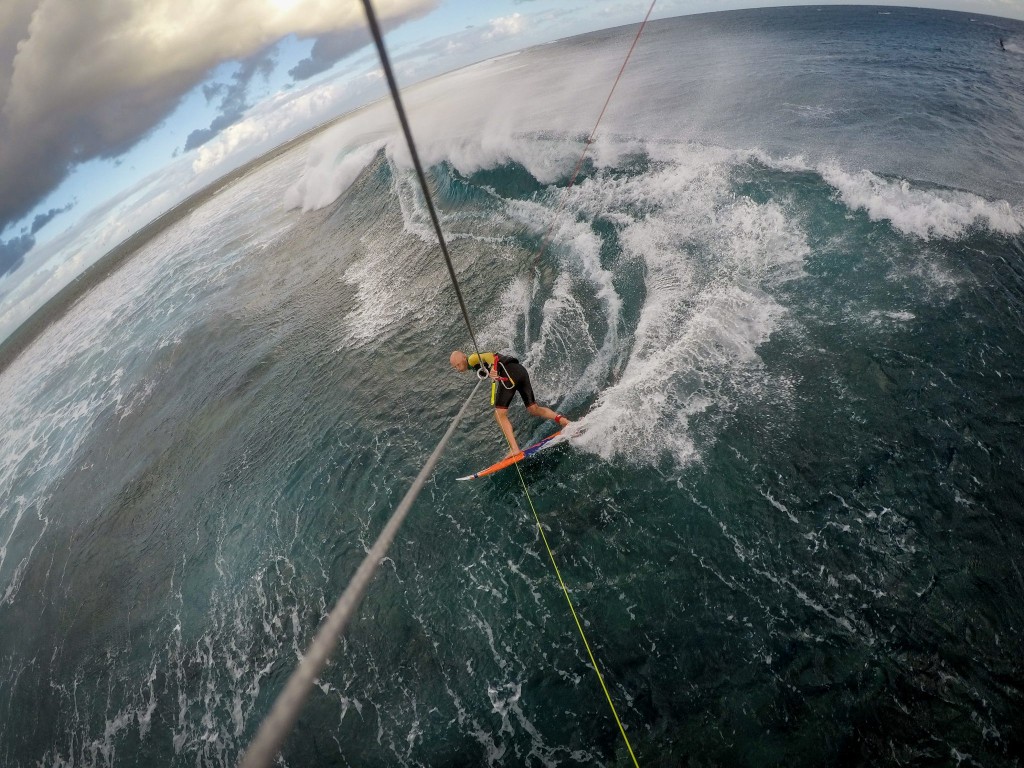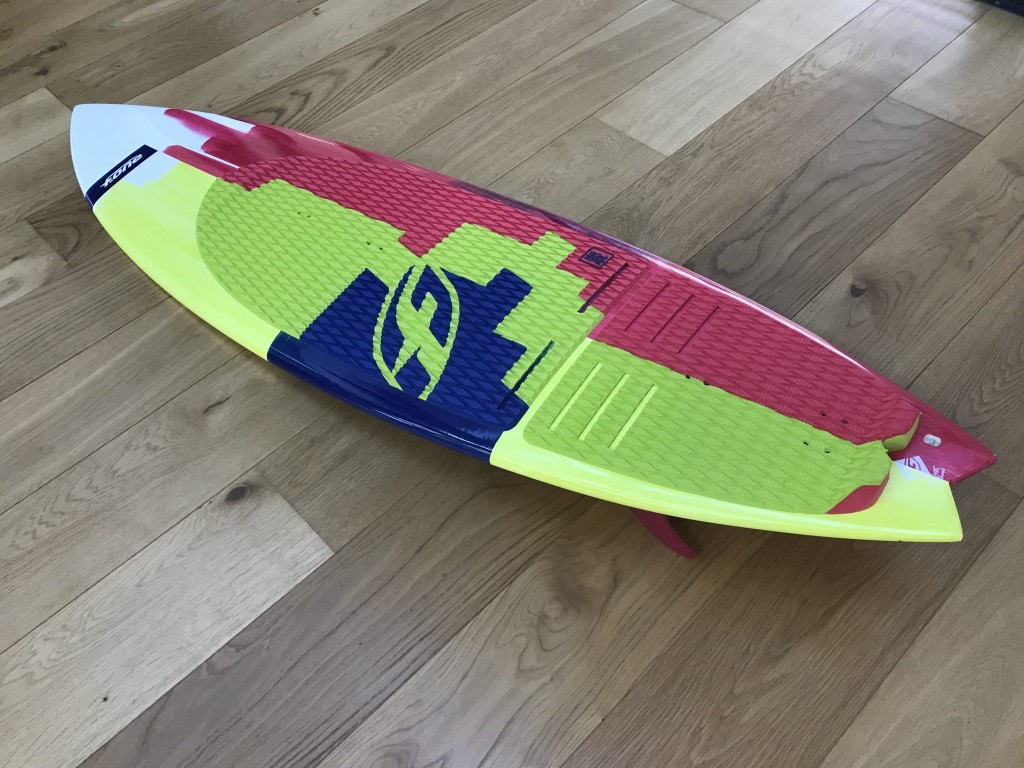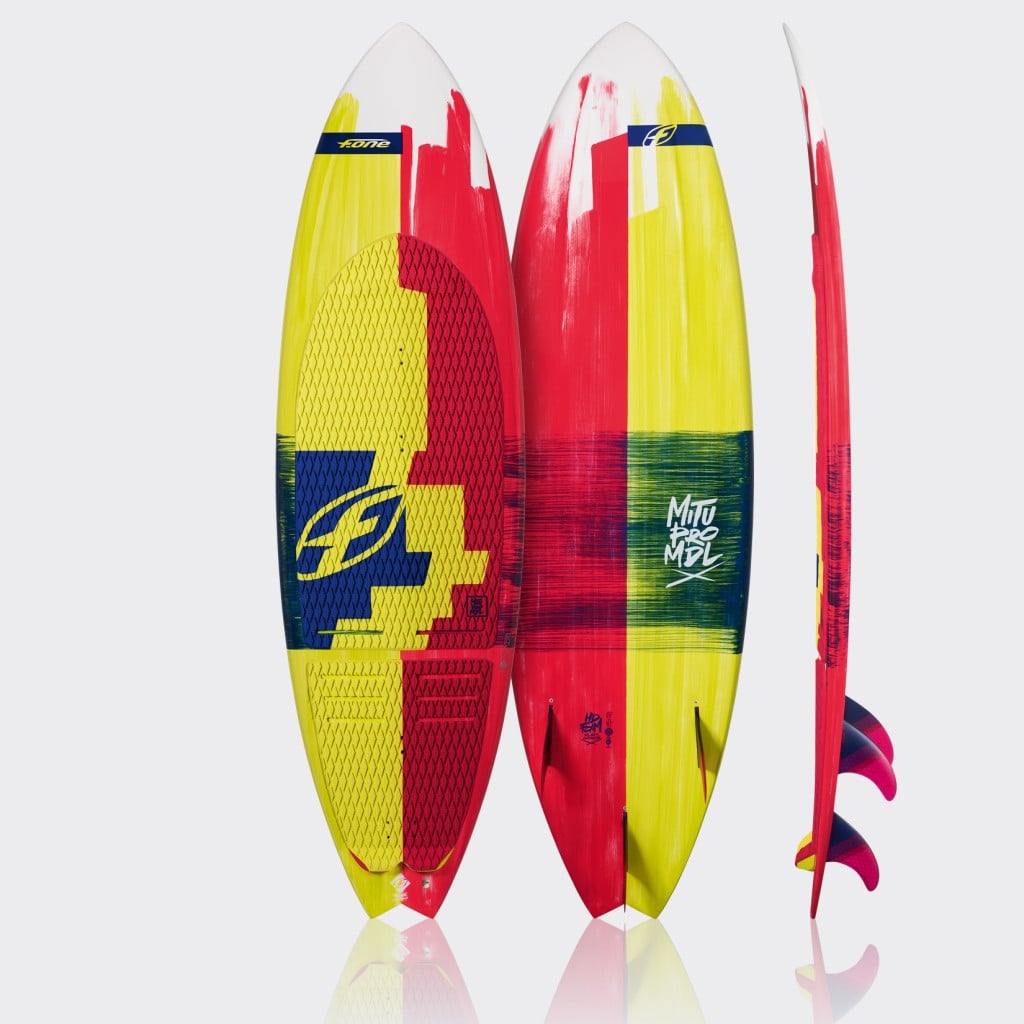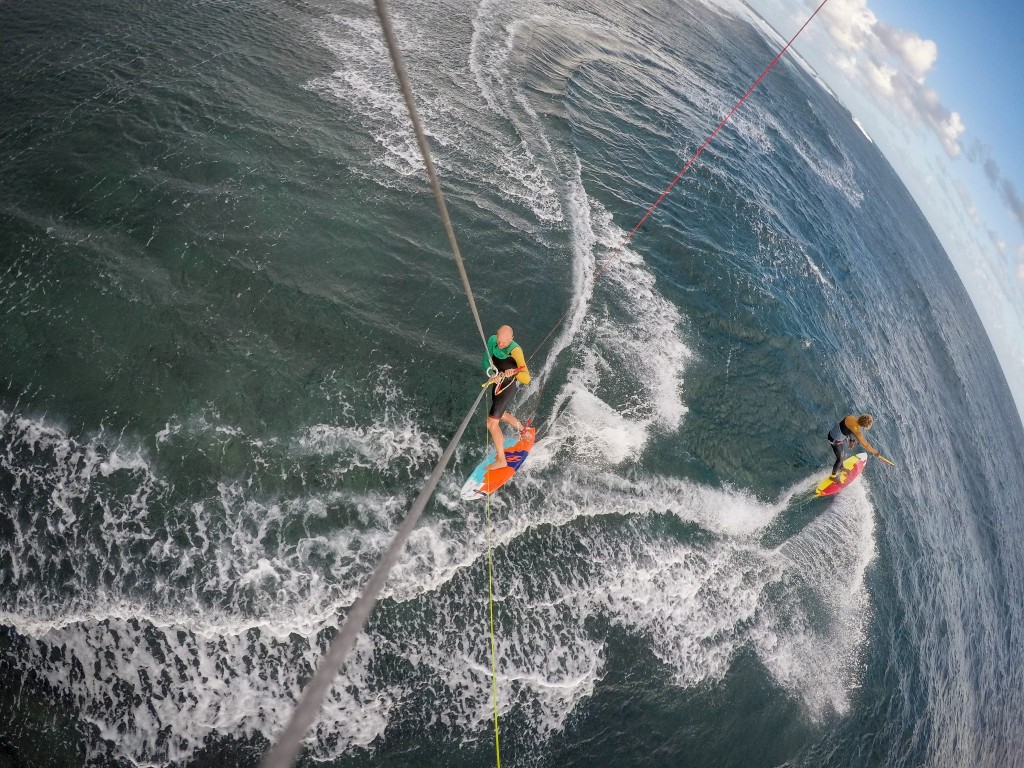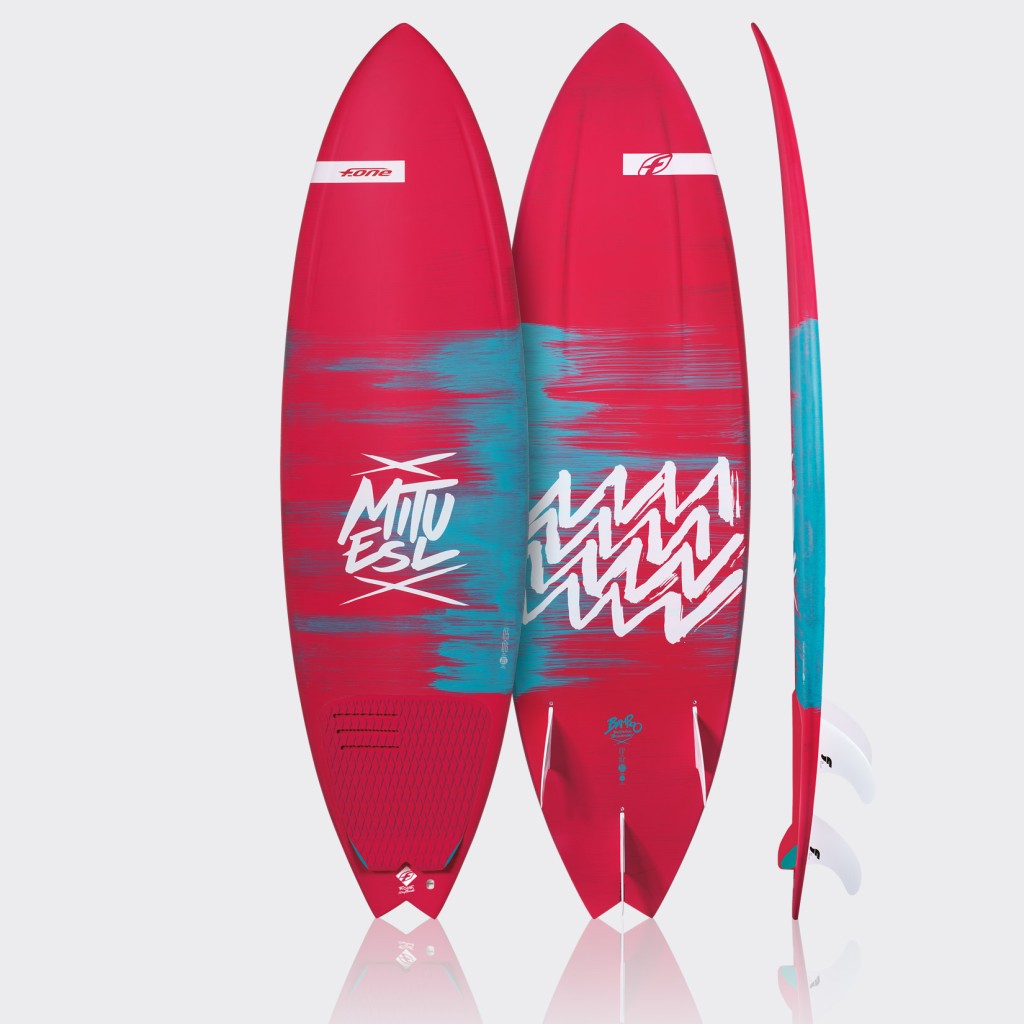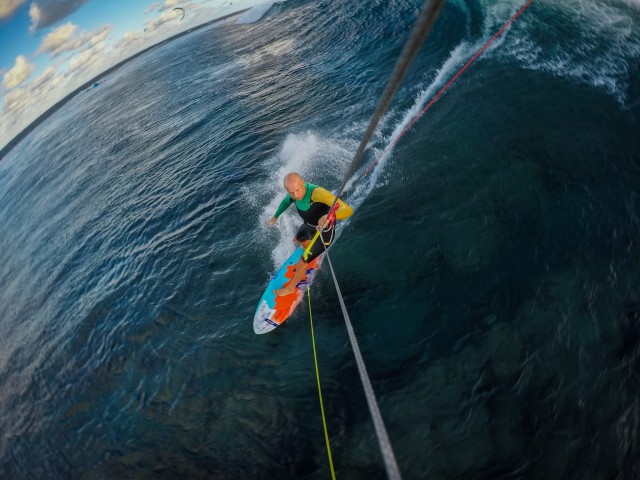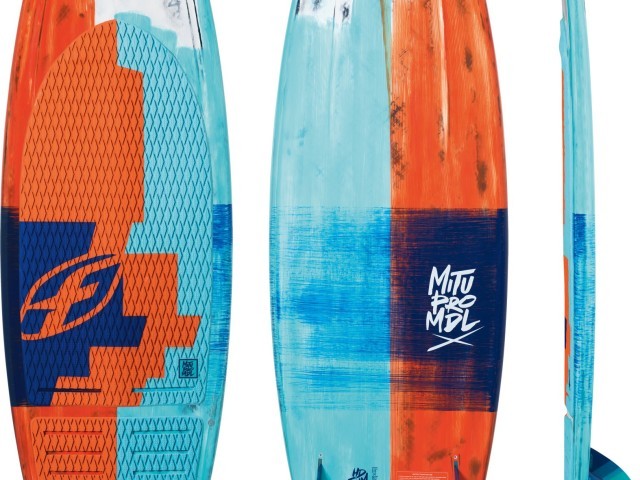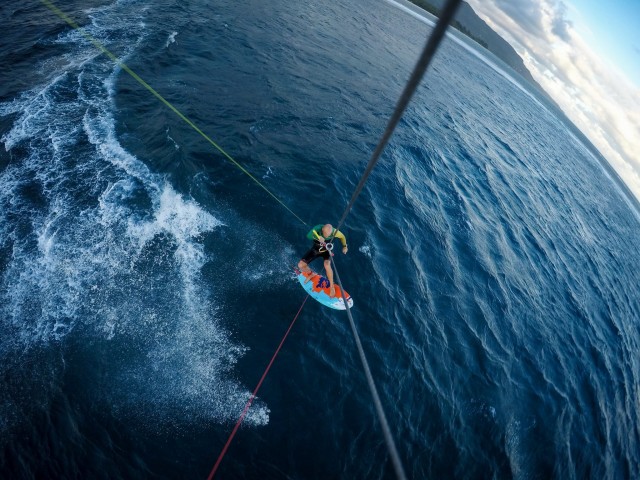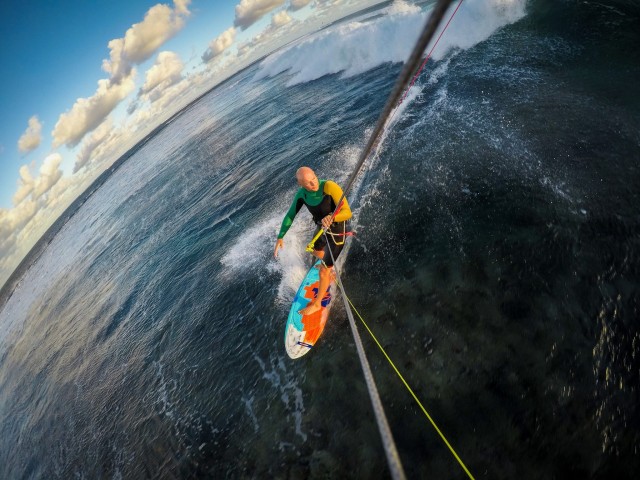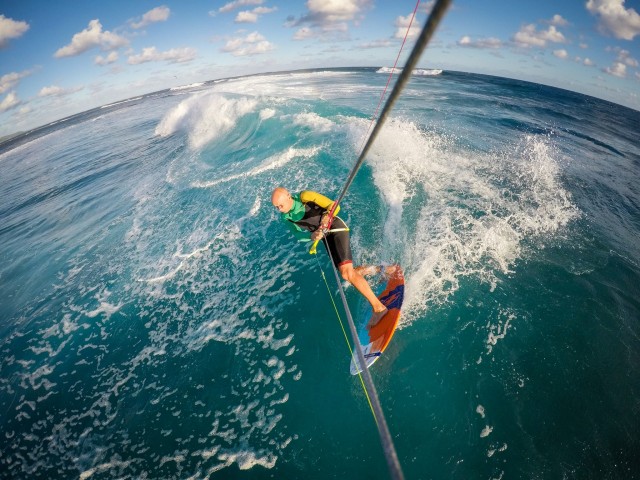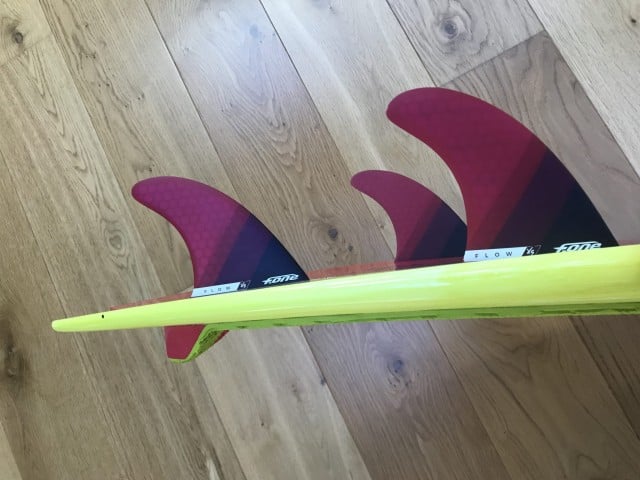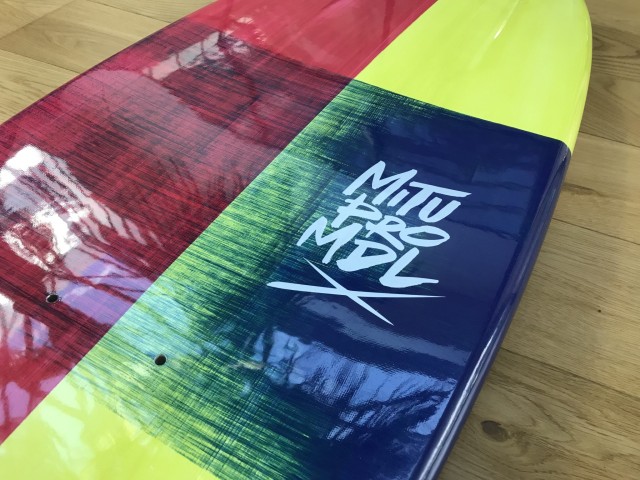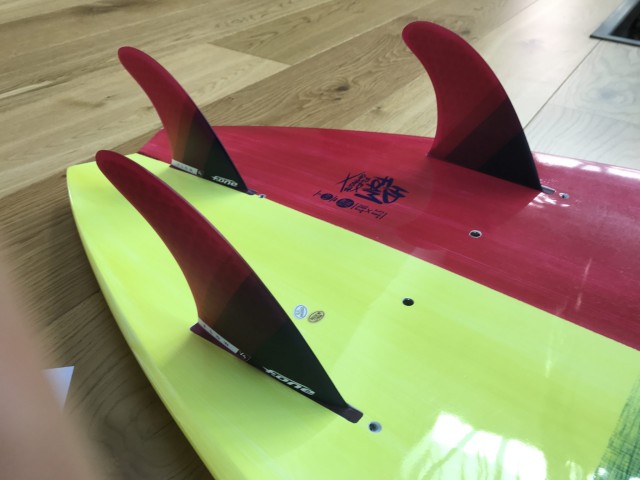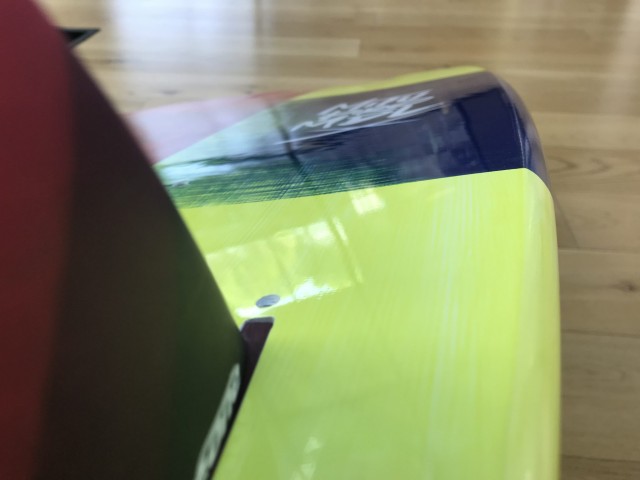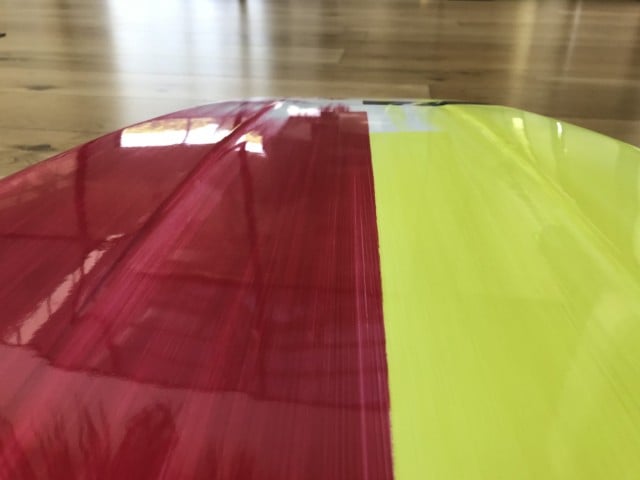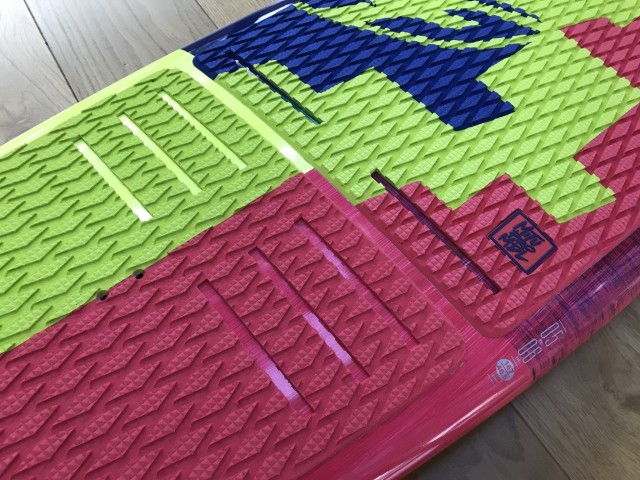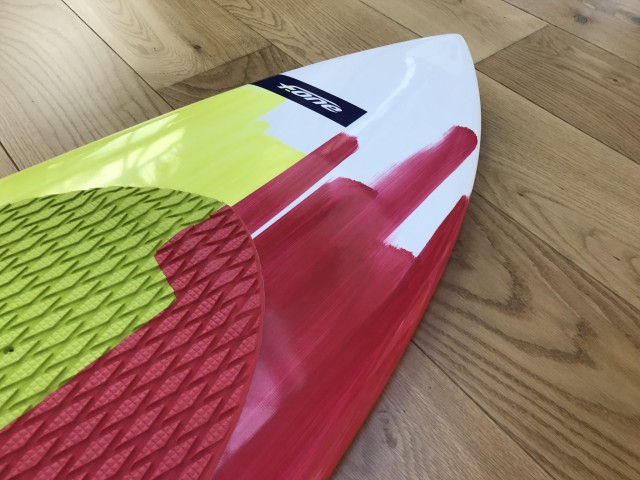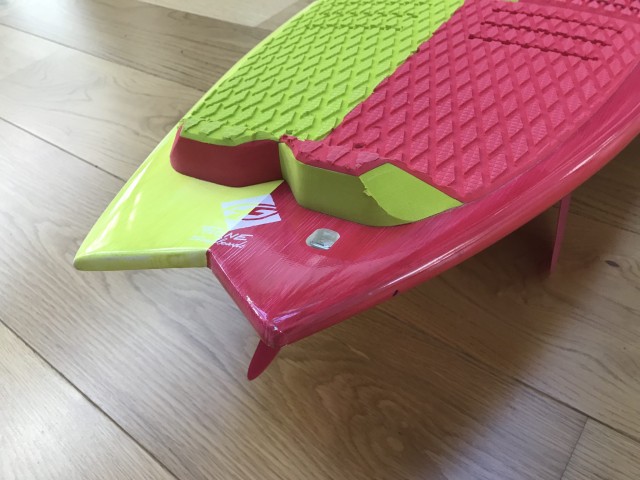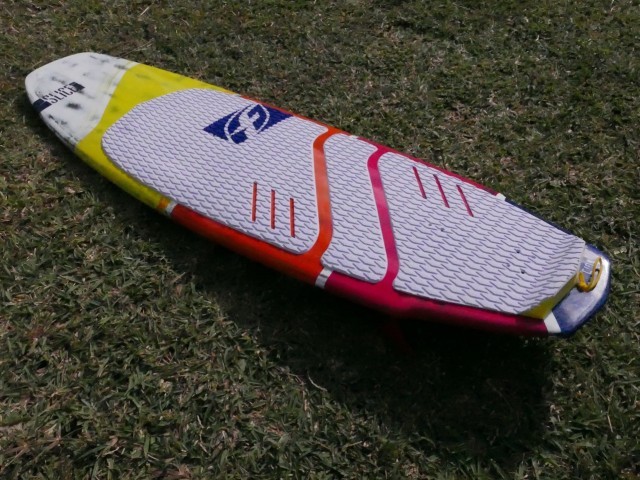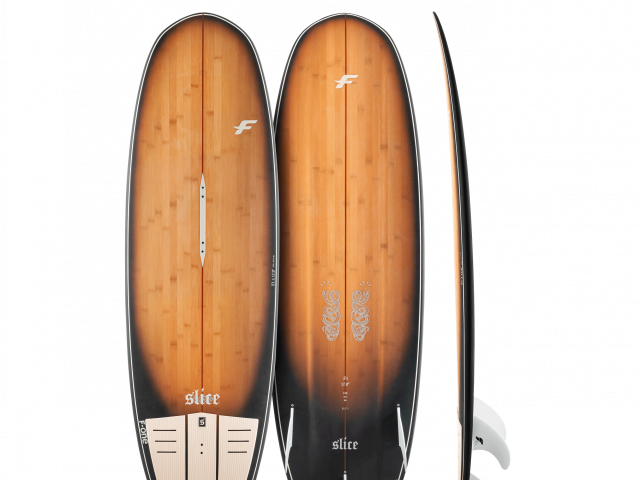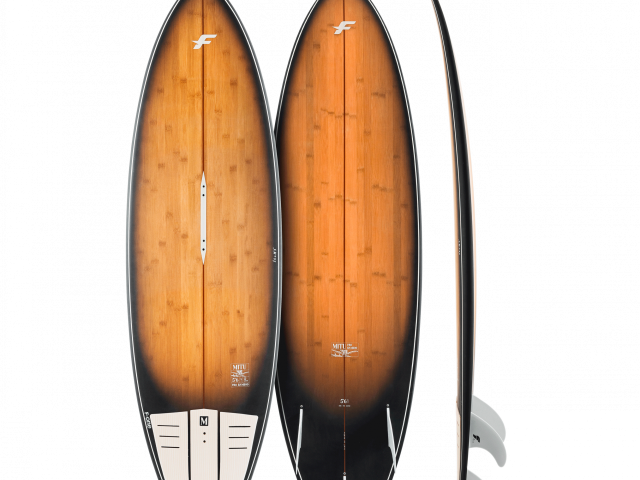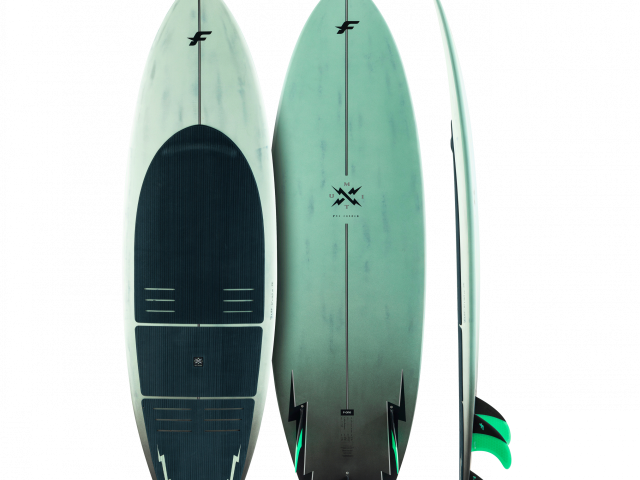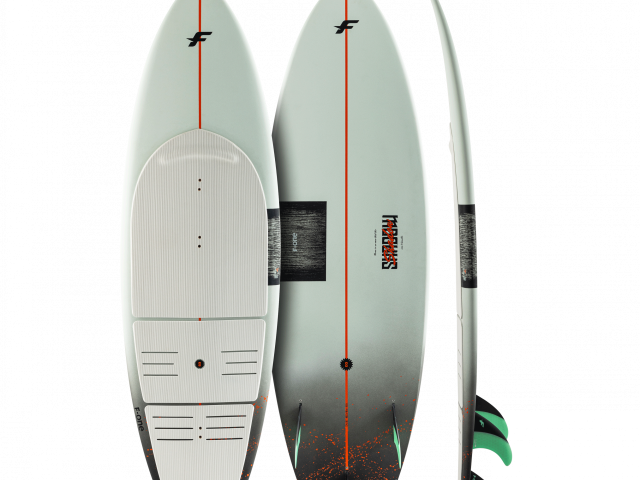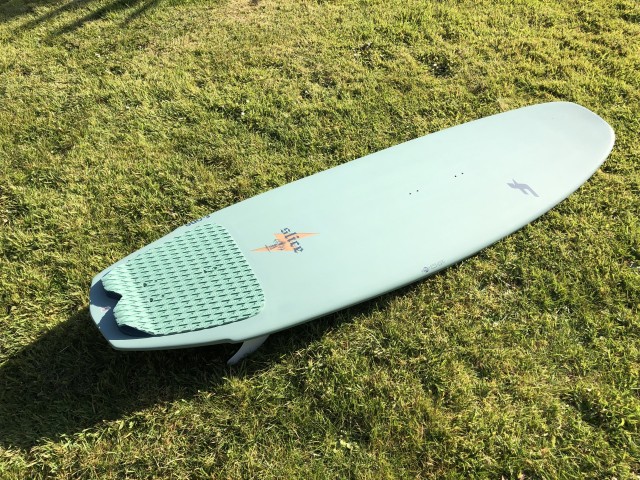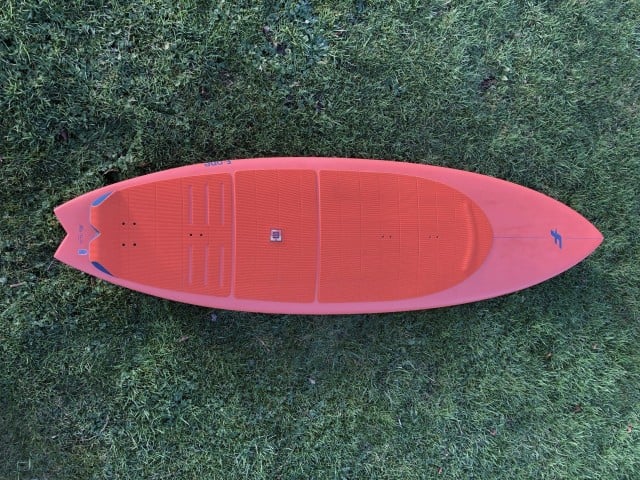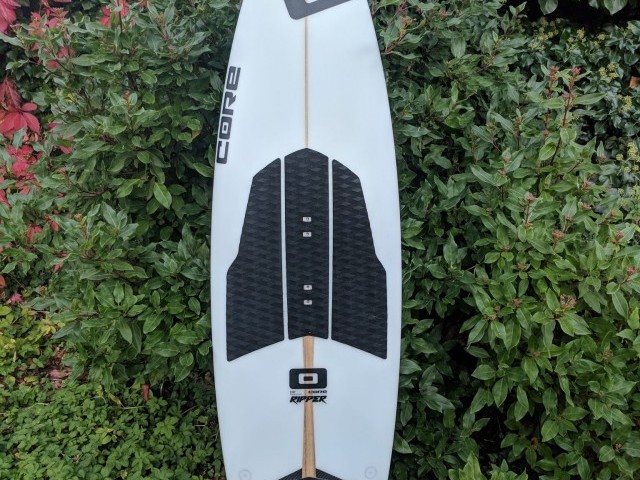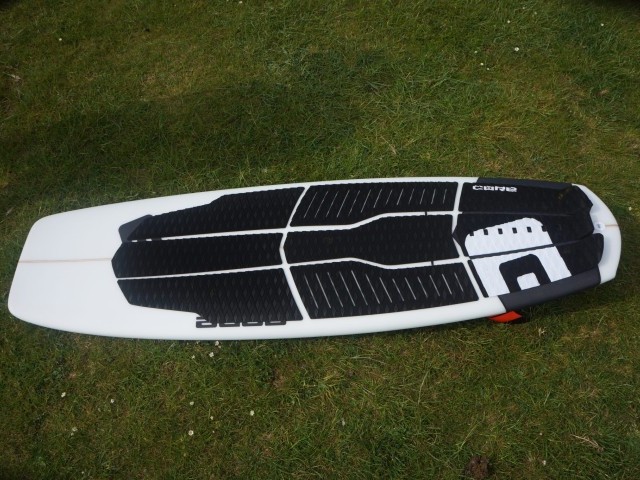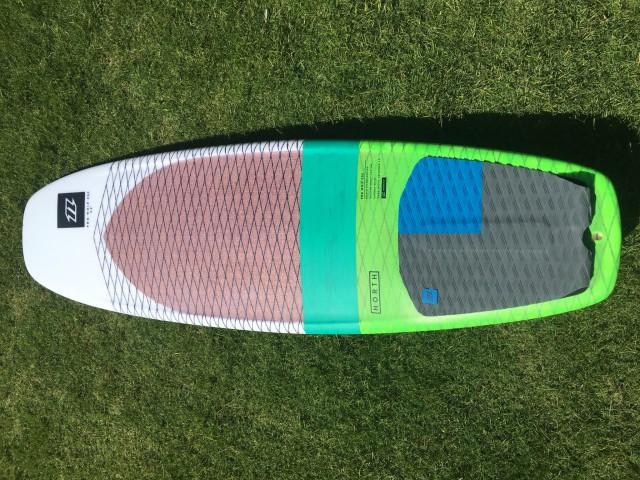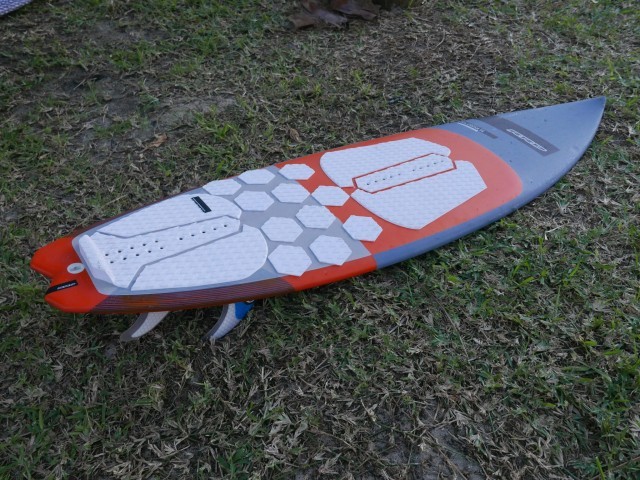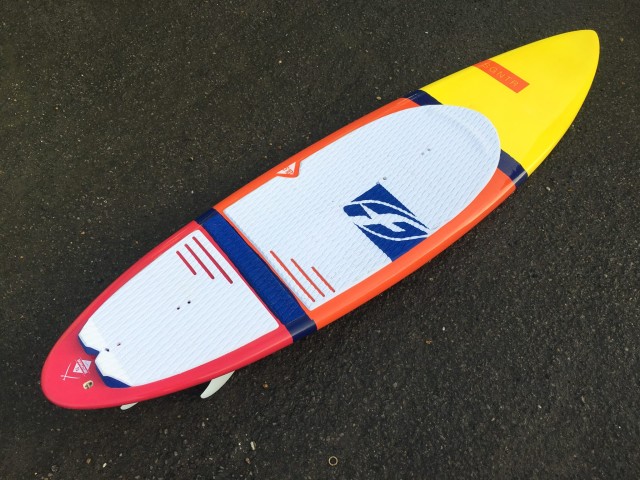At A Glance
If ever there was a surfboard that needed no introduction this is it. The Mitu Pro Model has been in the F-One line up for a long time now, and it is synonymous with World Champion and legendary wave rider Mitu Monteiro. Over the years the shape has been tweaked, and the sizes have changed slightly, but the premise is still the same. To be the best wave board on the market, not just for Mitu but everybody.
It’s that last statement, which has made this board so famous, it’s always had a slightly wider, fuller shape. This makes it incredibly easy to ride and forgiving, which means plenty of people learn their first strapless turns on this board, while at the same time Mitu is busy getting through more barrels than an Irish pub on St Patricks Day.
The outline of the board is quite full, and while it bucks the trend for chopping off the nose and tail in the obvious sense, these boards have been using that style for years. It still has a pointy front end but it is exceedingly full in the nose, and the swallow tail allows the board to retain lots of width at the back. Essentially this is a very modern take on what a surfboard should be.
It’s still a thruster design with three fins in the rear, and there is a distinct channel in the front to aid with strapless tricks. Available in three constructions and three price points there should be a Mitu Pro to suit you. The Carbon version is the highest price and stiffest board; the standard version features the excellent HD Foam Flex Composite construction that F-One have been using for some time, and finally, the ESL version (essential) utilises the bamboo construction that F-One are famous for.
If you want to ride straps, then you have to go for the HD Foam Flex version as this is the only board to feature inserts. The ESL version also has no deck pad, so you either need to stick some traction to it or dig out the wax!
On the Water
We’ve been lucky enough to test all three versions of this board, and we’ve been incredibly impressed with all of them, but which version is right for you? Read on to find out.
There are some similarities across the whole range of boards, namely the shape; they all feature the same design. The Camel Deck, grab rails and channelled nose are present across the series. While the full deck pad is only available on the Carbon and HD Foam Flex boards. As mentioned previously if you want to ride straps then your choice is limited to the HD Foam Flex version too.
The Mitu Pro has always been popular, and when you are riding this board, it is easy to see why. It can be so many things to so many people. Its inherently full shape makes it ideal for learning on, it’s forgiving and easy to ride. When the conditions switch on it harnesses performance that is hard to equal.
It’s incredibly fast down the line while remaining very stable; this is perfect for fast hollow waves like One Eye where the run in is often incredibly choppy until the wave hits the reef. This inspires confidence and pushes you to take on bigger conditions knowing the board won’t hold you back.
In the turns, it can be incredibly snappy and vertical when you crank the edge, yet it can also perform longer more drawn out rides with no twitching or movement on the rail. The fins offer grip when you need them too but can also be pushed past the hold point to break the tail out easily. F-One have nailed the shape in term of handling!
In the air the board sticks to your feet easily, the broad nose works well to help push back against your feet. The pop is excellent, especially with the Carbon version, which feels snappy underfoot.
This leads me on to the final point, which version is right for you? If you are a pure wave rider, the HD Foam Flex version offers a better feel underfoot for wave riding. There is more flex, and the board feels smoother over chop on the run-up to the wave and allows you to really dig the rails in and explode off the lip too.
If strapless airs are more your thing and pop is the key to your existence, then the Carbon version should be your go-to weapon. In this instance, the lighter construction allows easier freestyle moves with less swing weight too. But don’t just think the Carbon version is better, in our opinion the HD Foam Flex has a smoother more dynamic feel in the waves. Especially when it gets big.
The ESL then, perhaps as the name suggests, allows you to get into the Mitu Pro line up at a lower price point, and that is key. One thing these boards are not is cheap. This puts them out of reach for a lot of riders. The ESL version means you get the same blistering performance from the shape, at a lower price. Yes, it’s a little heavier and perhaps lacks a bit of the flex on the standard version, but it is still an absolute blast to ride.
If money is no object and your passion is riding waves, go with the HD Foam Flex. If money is no object and you love strapless freestyle, the Carbon version should be your preferred choice. If you think the price is a little high and you’re on a budget but still want one of the best shapes in the business, the ESL is your ticket to wave riding ecstasy.
Overall
Still one of the best shapes around the Mitu Pro has a broad appeal that will no doubt inspire confidence and progression for everyone. No matter if you are learning your first gybes, or looking to bust the fins out at One Eye this board has you covered. With the three price points and constructions options, there should be something for everyone. Our money would be spent on the HD Foam Flex version, don’t ‘carbon’ copy us though, ‘essentially’ the choice is yours…
Videos
This review was in Issue 69 of IKSURFMAG.
For more information visit F-ONE KiteboardingRelated
By Rou Chater
Rou has been kiting since the sports inception and has been working as an editor and tester for magazines since 2004. He started IKSURFMAG with his brother in 2006 and has tested hundreds of different kites and travelled all over the world to kitesurf. He's a walking encyclopedia of all things kite and is just as passionate about the sport today as he was when he first started!


